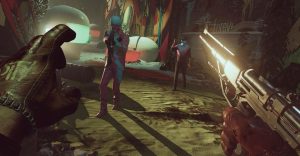Annabelle: Creation Ending & Post-Credits Scenes Explained

Spoilers for Annabelle: Creation.
–
Annabelle: Creation is the horror highlight of the summer – a genuinely scary, incredibly fun movie with a chilling (and confusing ending), it also boasts two post-credits scenes that tie it into a much bigger world.
The Conjuring Universe just got a major expansion with the Annabelle prequel. The original spinoff was another financial success for the James Wan-masterminded horror saga but savaged by critics for its threadbare plot and empty scares. Creation ups the ante with David F. Sandberg going further into the past of the most disturbing toy this side of Chucky to deliver a cracking Friday-night horror movie that scares while tackling the effects of broken families – as well as playing wonderfully into the rest of the series.
The film is heavy on new mythology for Annabelle, connections to The Conjuring films and setting up next spinoff The Nun. Let’s explore what that ending and those Marvel-esque stingers mean.
Annabelle’s Origins Explained (This Page)
Annabelle’s Origins Explained

Before Creation, all we knew about Annabelle was that she was an antique doll possessed by a devilish spirit known as the Ram. The specifics of either history was rather vague, but now, while we still have questions regarding the being itself, we know how the creepy toy was created and how it first became linked with possession.
In the opening of the prequel, we learn that “Annabelle” is one of an exclusive run of dolls by the Mullins Toy Company, a small outfit ran by Samuel Mullins in the 1940s that were all the rage in his urban community. It’s implied in the film that the soon-to-be-evil doll was given number 1 of 100, but that Mullins didn’t make any more of the set due to a personal tragedy, making her truly one-of-a-kind.
That personal tragedy was the death of his daughter. Nicknamed Bee – which we later learn that is actually short for Annabelle providing the true origin of the doll’s name – she was hit by a car on the way back from church. The Mullins family spiraled into depression but then found solace in what they believed to be Bee’s ghost. She haunted their house in a docile manner, convincing the grieving parents to allow her to reside in the doll.
Upon doing that, however, they quickly learn it wasn’t Bee at all, but a demon wanting to find a physical form. The doll served as a first step, but now it wants to take on a living being – Esther Mullins. It attacks the mother when alone, but she’s saved by her husband and the doll is locked away in a bible-wallpapered and holy water-bathed cupboard.
All seemed well until they opened their house to an orphanage (one that already has links to some dark occult magic, although we’ll get to that in a bit) – in the movie itself, set in 1957, the spirit manipulates the unsuspecting girls into freeing it, allowing the Ram to possess polio sufferer Janice. After a lot of scary set-pieces wherein the spirit attempts to claim more souls, Janice escapes and gets herself adopted by the Higgins family, changing her name in a rather sadistic turn to, what else Annabelle. At this point, the spirit is seemingly gone from the doll, which is taken away by police.
The movie ends 12 years later in 1969 when Annabelle, now grown, kills her adoptive parents, bringing us right to the start of the first movie and the doll’s return. Which raises an awful lot of questions…
- The Nun (2018)Release date: Sep 07, 2018
1
2
3
4
About The Author


















